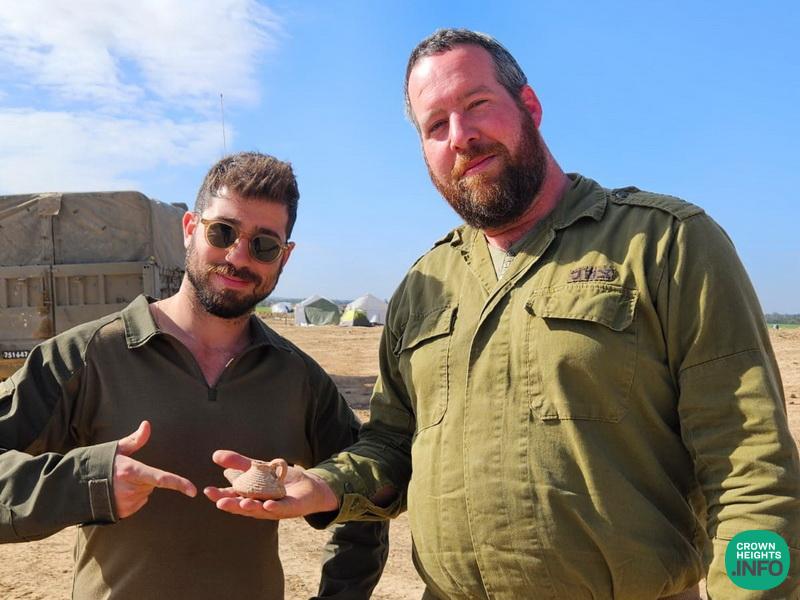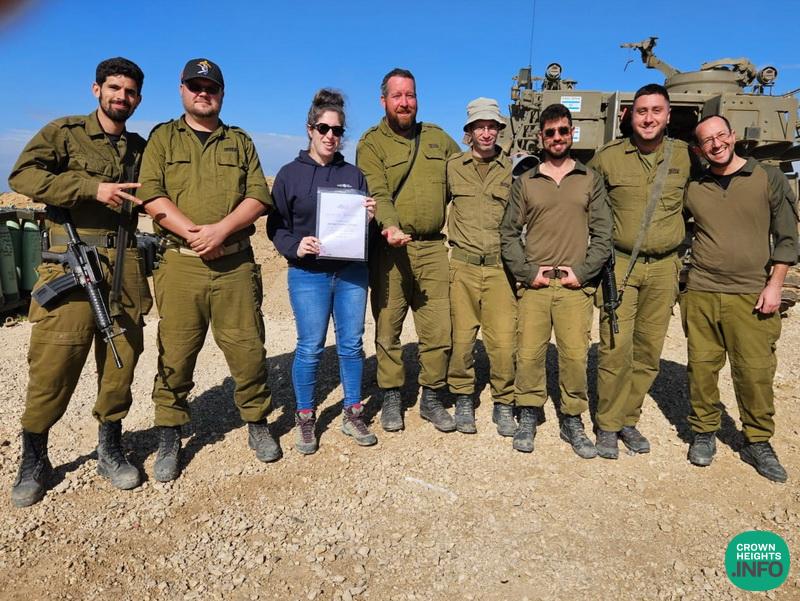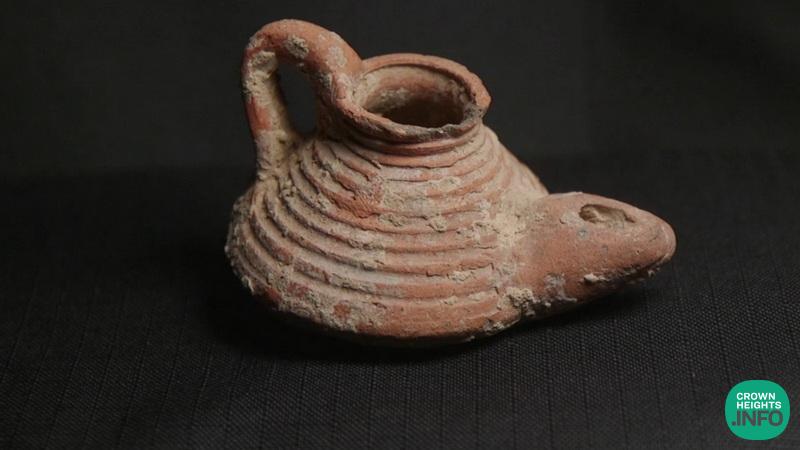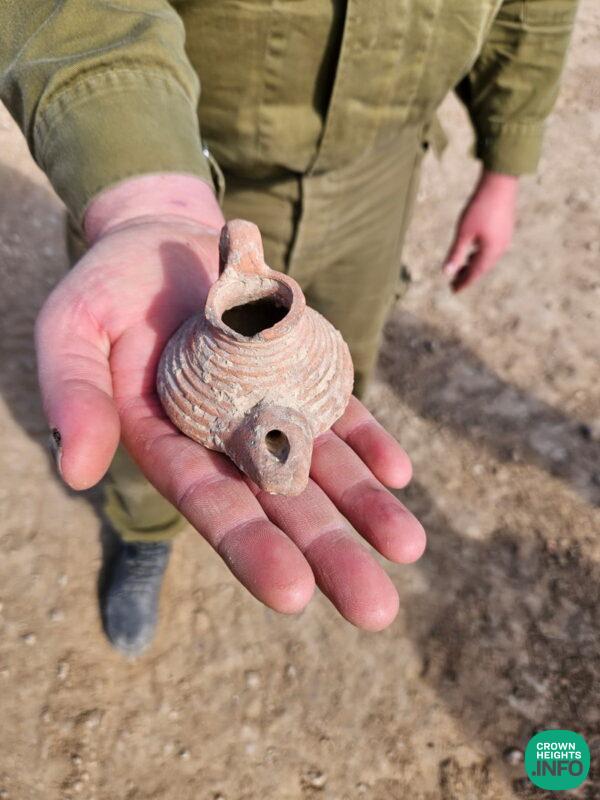
IDF Soldiers Discover 1,500-Year-Old Clay Lamp in the Gaza Envelope Troops Assembly Area
Nathaniel Melchior and Alon Segev, two reserve soldiers in the 404th Battalion of the 282nd Fire Brigade, did not expect this on their reserve service: they discovered an intact ancient oil lamp dating from the Byzantine period. The soldiers showed good citizenship and handed the lamp over to the Israel Antiquities Authority.
“Whilst we were walking around the field, we came across a piece of pottery that was lying upside down, and its round shape caught my eye,” recalls Nathaniel. “It was covered in mud. I cleaned it, and when I realized what it was, I called the Israel Antiquities Authority.”
Meanwhile, Alon uploaded to his Facebook group a post with a picture of the lamp, and it aroused a lot of interest. “The post gained momentum, it received dozens of comments and hundreds of likes,” says Alon. “The surfers offered different suggestions about the object’s identity and advised us to inform the Israel Antiquities Authority.”
According to Sarah Tal, the Israel Antiquities Authority’s Western Negev archaeologist, “This is an ancient clay lamp from the Byzantine period, dating about 1,500 years ago, known as a ‘sandal lamp’ and used for lighting. It was produced in a mold and is characteristic of the Shephelah area and southern Israel.” Sarah visited the soldiers, collected the precious artifacts, and awarded them an Israel Antiquities Authority certificate of appreciation.
“The war creates extraordinary situations on the archaeological front as well,” says Israel Antiquities Authority Director Eli Escusido. “The Land of Israel, particularly the Gaza Envelope area, is saturated with history and ancient finds, and the Israel Antiquities Authority cooperates with the IDF to protect and preserve them even during wartime. I congratulate the soldiers on their vigilance and their demonstration of good citizenship, and I remind everyone that when discovering an ancient find, it is important to leave it in place and call the Israel Antiquities Authority inspectors so our researchers can extract as much information as possible from the find, regarding the site where it was discovered.”
Photos by Sarah Tal and Emil Aladjem, Israel Antiquities Authority.















